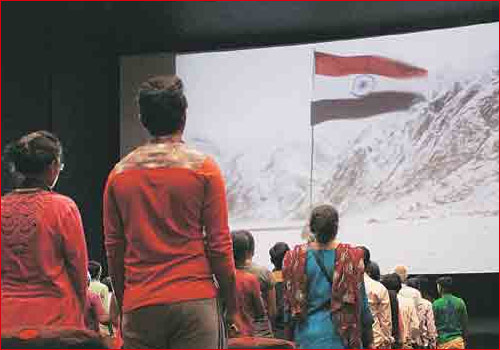List Of 104 Satellites Aboard PSLV-C37
posted on Feb 15, 2017 4:36PM
.jpg)
ISRO launched the PSLV-C37 rocket today with a record-setting 104 satellites on board the craft. The ISRO launch was yet another feather in the Indian space agency’s cap. The PSLV-C37 carried aboard the CartoSat-2D satellite, as well as 103 nano-satellites from various countries. Here’s a list of all the 104 satellites aboard ISRO’s PSLV-C37 rocket.
CartoSat-2D – ISRO, India (1)
CartoSat-2D is remote-sensing satellites that capture and send panchromatic and multispectral images of India from space. These images can be used to monitor the coastal land use, urban and rural planning, road networks and water distribution, and to identify natural and man-made features.
INS-1A – ISRO, India (1)
ISRO Nano Satellite-1A carries 2 science payloads. One is the Surface BRDF Radiometer (SBR) payload that can be used measure the Bidirectional Reflectance Distribution Function (BRDF) of targets on the Earth's surface and will be able to take readings of the sunlight reflected off different surface features. The other is the Single Event Upset Monitor (SEUM), which can be used to track Single Event Upsets that happen due to high energy radiation in space environment in Commercial, Off-the-Shelf (COTS) electronic components.
INS-1B – ISRO, India (1)
ISRO Nano Satellite-1B also carries two science payloads: the Earth Exosphere Lyman Alpha Analyser (EELA) and Origami Camera payload from ISRO's Space Application Centre (SAC). EELA keeps track of terrestrial exospheric line-of-sight neutral atomic hydrogen Lyman Alpha flux and can give an estimate for the interplanetary hydrogen Lyman Alpha background flux by means of deep space observations. The Origami Camera, on the other hand, is a remote sensing color camera that can take high-resolution pictures of the Earth with a small package.
Flock-3p – Plant Labs, United States of America (88)
ISRO’s PSLV-C37 will take Planet Labs’ 88 Flock-3p nano-satellites to space, bringing the total number of Dove satellites in space to 100. The satellites will be able to capture images of the entire Earth surface once a day and take pictures in line-scanner formation at mid-morning pass times to minimise shadows in the images they capture.
Lemur-2 – Spire Global, United States of America (8)
Eight Lemur-2 nano-satellites operated by Spire Global of the USA, each of which carries a meteorological payload that can determine the atmospheric pressure, humidity and temperature using signals from GPS satellites in Earth’s atmosphere. These nano-satellites also carry a payload that allows them to monitor and send forward tracking data from seafaring vessels.
Al-Farabi-1 – Al-Farabi Kazakh National University, Kazakhstan (1)
The Al-Farabi-1 is a nano-satellite developed by students of the Kazakhstan’s Al-Farabi Kazakh National University. It weighs 1.7 kilograms and will work on calculating uplink/downlink and ADCS Mission algorithms and testing of self-made components.
BGUSat – Ben Gurion University, Israel (1)
A 3U CubeSat nano-satellite developed by Israel’s Ben Gurion University, BGUSat carries two imaging payloads, an experimental GPS receiver and an optical communication experiment. It measures 10x10x30 centimetres and weighs 5 kilograms. The BGUSat’s cameras can track climate phenomena and its guidance system enables the operators choose the areas to shoot and research through a dedicated ground station at BGU.
Nayif-1 – Emirates Institution for Advanced Science and Technology (EIAST), UAE (1)
Students at UAE’s Emirates Institution for Advanced Science and Technology (EIAST) developed the Nayif-1 nano-satellite and will be used for educational purposes.
DIDO-2 – SpacePharma, Israel and Switzerland (1)
DIDO-2 is a microgravity research nano-satellite that can be used to conduct biochemical and physical experiments in micro-gravity. It will serve pharmaceutical companies, as well as other organisations, and will be able to send back data to Earth-based researchers via the on-board microscope.
PEASS – PEASS Consortium, Netherlands, Germany, Belgium, and Israel (1)
PiezoElectric Assisted Smart Satellite Structure or PEASS is a nano-satellite that can be used to evaluate and qualify ‘smart structures’ which combine composite panels, piezoelectric materials, and next-generation sensors.
The PSLV-C37 rocket launched by ISRO carries satellites from many different countries as part of Antrix Corporation Limited’s deals with the operators of these satellites. Antrix is ISRO’s commercial division and provides entities the option to get their satellites in space onboard the ISRO rockets.

.jpg)



.webp)

.webp)

.webp)













.webp)
.webp)
.webp)
